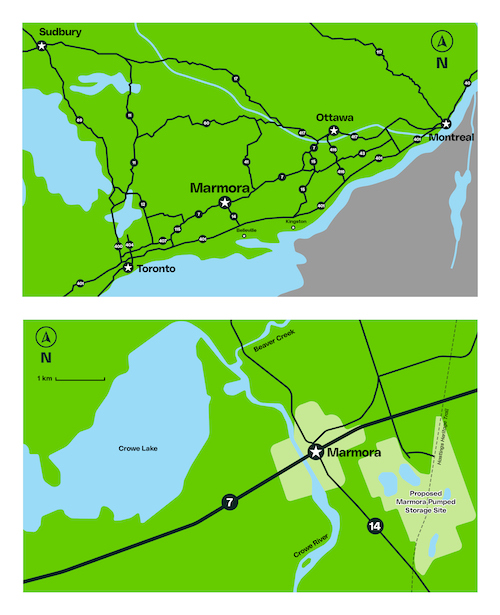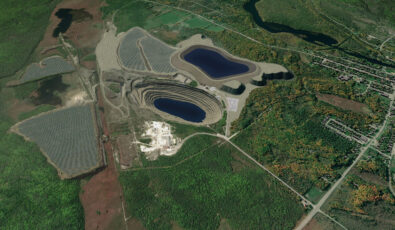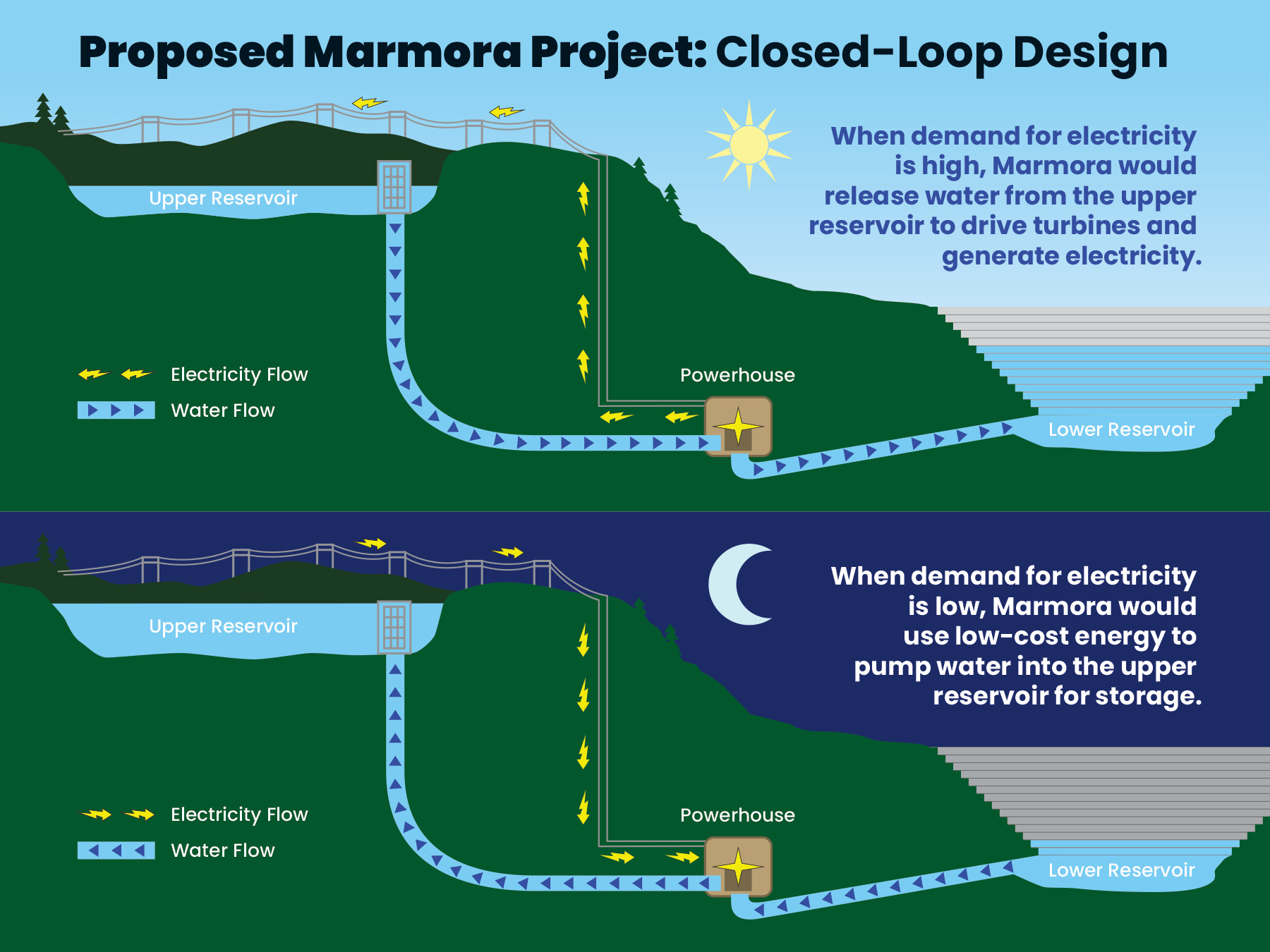Project Update - July 2023
On July 10, 2023, the Ontario Ministry of Energy (MoE) released Powering Ontario’s Growth – an integrated strategy detailing the province’s plan to meet energy demands for 2030 and beyond. Actions in the report include a request for the Independent Electricity System Operator (IESO) to assess the proposed Marmora Clean Energy Hub Project to improve Ontario’s grid efficiency. Please access the report for more details.
Location and territory acknowledgement

Located halfway between Toronto and Ottawa, the proposed project lies within two historical First Nation Treaties; the northern portion lies in Treaty 27/Treaty 27 ¼, and the southern portion lies in the Crawford Purchase. Both Treaties and the Crawford Purchase are the traditional and Treaty territory of Alderville First Nation and territory covered by the Williams Treaties First Nations Settlement Agreement. Ontario Power Generation and Northland Power Inc. acknowledge and respect Indigenous Nations and communities whose practices and spiritualities are tied to the land and water, and continue to develop in relation to the territory and its other inhabitants today.
A battery made from nature
The proposed Marmora Clean Energy Hub Project is looking to convert Marmora’s former open-pit iron ore mine into a 400-MW clean energy asset – a first-of-its-kind project for Canada. The inactive site has the potential to become a source of clean energy that not only creates the electricity we need, but serves as an economic engine supporting skills training, tourism and the local business community.
Did you know? The mine pit, which reaches a depth of more than 200 metres below ground level, was created for mining operations in the mid-20th century. Since mining operations ceased in the late 1970s, the pit has filled with a combination of rain and ground water. The proposed Marmora Project would recirculate this water between two reservoirs to generate electricity using a closed-loop design. This approach avoids drawing water from nearby waterways and lakes, eliminating impacts to fisheries and waterway levels.

If constructed, the project would interconnect with major transmission infrastructure in eastern Ontario fewer than 8 kilometres away, allowing flexible east-west bi-directional power flow. This allows for adequate load capacity, and is easily accessible for workers, equipment and supplies.
Unlike other energy technologies requiring upgrades or replacement every few decades, the proposed Marmora Clean Energy Hub Project has an operational life span of more than 90 years. With a low operating cost and the ability to supply electricity on-demand, this GHG-free facility can help Ontario meet future capacity needs and achieve its climate change goal of being net-zero by 2050.
Surrounding lands on the Marmora property could be developed for community recreational use and tourism throughout the year. The creation of naturalized areas for public use could be explored as a potential conservation opportunity in the future.
Work is currently underway to advance this clean energy project in pursuit of a cleaner, more flexible electricity grid for Ontarians.
We’re planning for innovation with real impact
Hydroelectric pumped storage uses the pumping and release of water between two reservoirs at different elevations to store water and generate electricity.

When demand for electricity is low, a pumped storage facility can use low-cost energy to pump water from the lower reservoir to the upper reservoir for storage. When demand for electricity is high, that same facility can release water from the upper reservoir through a powerhouse to drive turbines and generate electricity.
The Marmora Project is proposing a closed-loop cycle design that recirculates the same water between two reservoirs. If constructed, the facility will offer power on demand thanks to its ability to ‘time shift’ generation by delivering power when it’s needed most by our system (and maximize ratepayers’ return in the process).
Additional details regarding design and function will become available as the project progresses.






